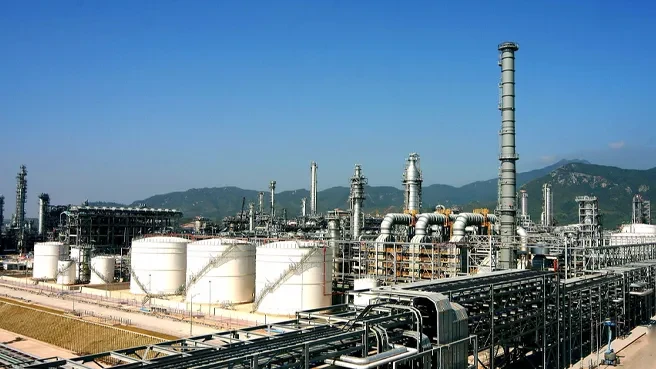
styrene butadiene rubber
Styrene-Butadiene Rubber (SBR) A Comprehensive Overview
Styrene-butadiene rubber (SBR) is a synthetic polymer that holds a significant position in the world of elastomers and plastics. With its unique properties and versatility, SBR is extensively used in various applications, ranging from automotive parts to consumer goods. This article aims to explore the composition, production, applications, and advantages of SBR.
Composition and Properties
SBR is a copolymer made from styrene and butadiene, two distinct monomers. The styrene component enhances the rubber’s hardness and strength, while the butadiene contributes to its elasticity and resilience. The typical composition can vary, but common formulations include about 70% butadiene and 30% styrene.
One of the remarkable features of SBR is its excellent abrasion resistance, which makes it suitable for applications that endure wear and tear. Additionally, SBR exhibits good aging stability and heat resistance, making it a preferred choice in environments that experience varying temperatures. However, it's important to note that SBR has limited resistance to oil and solvents, which can affect its performance in certain applications.
Production Process
The production of SBR involves polymerization processes, typically carried out in an emulsion or solution state. Emulsion polymerization allows for better control over the molecular weight and distribution of the rubber, which plays a crucial role in defining its physical properties. The process generally includes the polymerization of butadiene and styrene in the presence of an initiator, resulting in the formation of a stable rubber compound.
Once produced, SBR can be further modified to enhance its properties. For instance, additives such as carbon black can be integrated to improve the strength and durability of the rubber. This combination results in a material that is not only versatile but also tailored to meet specific performance standards.
styrene butadiene rubber

Applications
SBR is extensively utilized across various industries. The automotive sector is one of the largest consumers of SBR, where it is commonly used in tire manufacturing. Due to its excellent abrasion resistance and elasticity, SBR helps in enhancing the performance and longevity of tires, providing a safe and reliable driving experience.
In addition to tires, SBR is employed in the production of conveyor belts, rubber seals, gaskets, and various molded products. Its effectiveness in these applications can be attributed to its ability to withstand mechanical stresses and its flexibility under pressure. Other notable uses of SBR include adhesive formulations and as a component in various consumer goods, such as shoes and toys.
Advantages and Challenges
The advantages of SBR are numerous. Its cost-effectiveness, combined with its mechanical properties, makes it an attractive option for manufacturers looking to balance performance and expense. Furthermore, the ability to modify SBR with different fillers and additives allows for customization according to specific needs in various applications.
However, SBR is not without its challenges. As it has limited resistance to oils and solvents, it may not be suitable for applications where such exposure is prevalent. Additionally, the environmental impact of synthetic rubbers has raised concerns, leading to an increased focus on sustainable alternatives and recycling technologies in the rubber industry.
Conclusion
Styrene-butadiene rubber is a vital synthetic material with a wide array of applications in modern industries. Its unique combination of properties, including durability, flexibility, and abrasion resistance, makes it indispensable in the production of tires, automotive components, and various consumer products. While challenges such as oil resistance and environmental impact remain, ongoing advancements in materials science continue to pave the way for improved performance and sustainability in the use of SBR. As industries evolve, SBR will likely maintain its relevance and significance in the synthetic rubber market.
-
Why Glacial Acetic Acid Food Grade Is Essential in FlavorNewsMay.26,2025
-
Surging Export Growth of Food Additives in ChinaNewsMay.26,2025
-
How Ammonium Nitrate Fertilizer Boosts Crop YieldsNewsMay.26,2025
-
How 1,2,3-Benzotriazole Shields Plastics from UV DegradationNewsMay.26,2025
-
Cyanide in Gold Mining: Protecting People and the PlanetNewsMay.26,2025
-
Aluminum Hydroxide in Modern Sunscreen FormulationsNewsMay.26,2025
-
Understanding Synthetic Rubber OptionsNewsApr.27,2025
Hebei Tenger Chemical Technology Co., Ltd. focuses on the chemical industry and is committed to the export service of chemical raw materials.
-

view more DiethanolisopropanolamineIn the ever-growing field of chemical solutions, diethanolisopropanolamine (DEIPA) stands out as a versatile and important compound. Due to its unique chemical structure and properties, DEIPA is of interest to various industries including construction, personal care, and agriculture. -

view more TriisopropanolamineTriisopropanolamine (TIPA) alkanol amine substance, is a kind of alcohol amine compound with amino and alcohol hydroxyl, and because of its molecules contains both amino and hydroxyl. -

view more Tetramethyl Thiuram DisulfideTetramethyl thiuram disulfide, also known as TMTD, is a white to light-yellow powder with a distinct sulfur-like odor. It is soluble in organic solvents such as benzene, acetone, and ethyl acetate, making it highly versatile for use in different formulations. TMTD is known for its excellent vulcanization acceleration properties, which makes it a key ingredient in the production of rubber products. Additionally, it acts as an effective fungicide and bactericide, making it valuable in agricultural applications. Its high purity and stability ensure consistent performance, making it a preferred choice for manufacturers across various industries.











